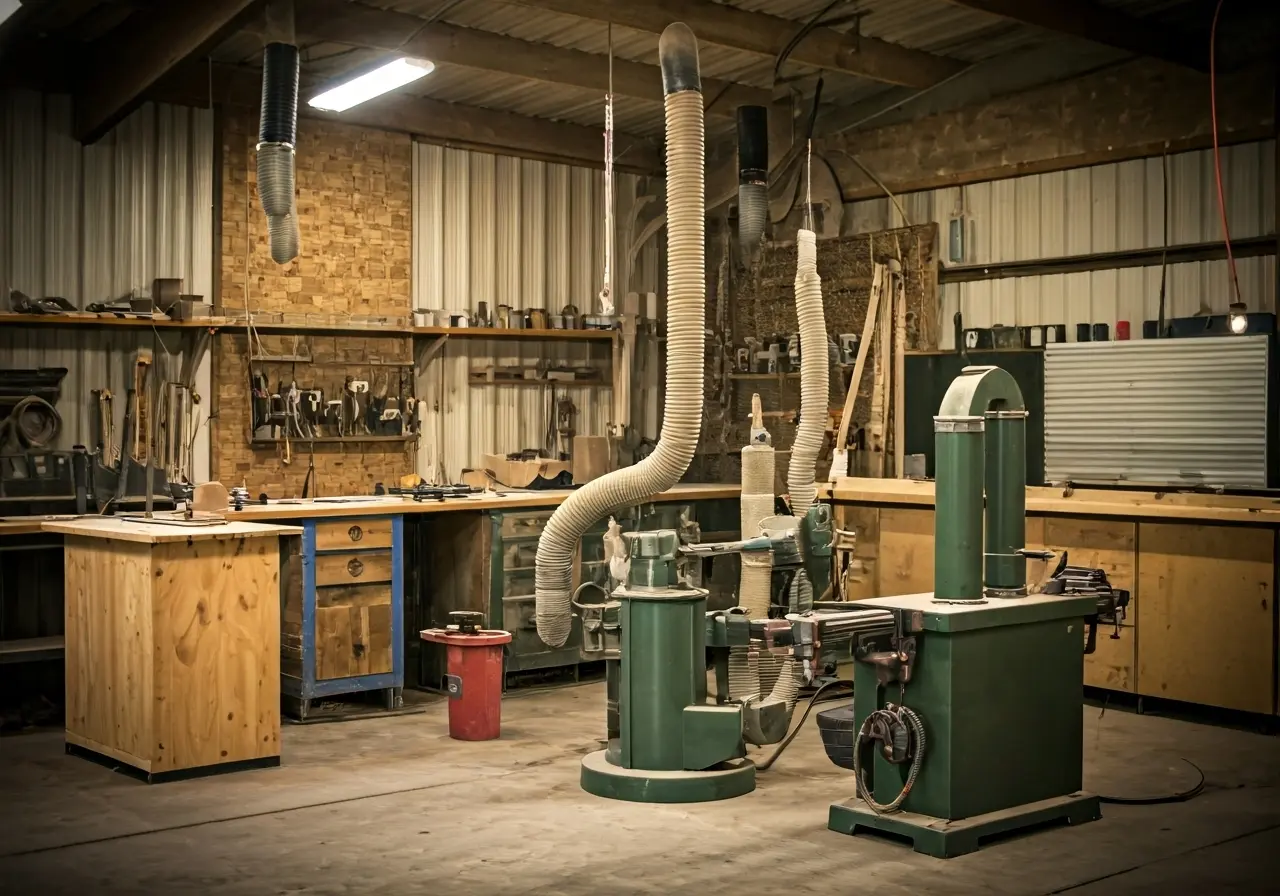A clean workspace is not just about aesthetics; it’s crucial for efficiency, safety, and quality of work. Mastering dust collection can lead to a healthier, more productive environment whether you’re in a woodworking shop or any area where dust is prevalent. In this guide, we’ll walk you through the essentials of dust collection, helping you create a workspace that’s not only cleaner but also more enjoyable to work in.
Understanding the Importance of Dust Collection
Dust might seem harmless, but over time, it can accumulate and pose serious health risks. Fine dust particles can enter the respiratory system, leading to potential respiratory infections and other health problems if inhaled regularly. Beyond health, dust accumulation can compromise the quality of your work. For instance, in woodworking, dust can obscure fine measurements or create imperfections in finished surfaces. Additionally, dust accumulation can clog tools, resulting in decreased efficiency and increased wear and tear, leading to costly repairs or replacements. It’s crucial to understand these impacts as you begin establishing your dust collection system to maintain both the quality of your work and your health.
Moreover, dust can present significant safety hazards. Dust particles can become airborne and settle on floors and equipment, creating slippery surfaces that may lead to accidents. In environments where flammable dust is present, such as metalworking shops, the risk of byproducts igniting increases exponentially, leading to potential fire hazards. Therefore, implementing a dust collection system is not only about maintaining a clean environment but also about ensuring a safe workspace for you and anyone else sharing that space.
Essential Tools and Systems for Dust Collection
When it comes to dust collection, several tools and systems can address different workspace needs. The simplest is the shop vacuum, a versatile tool well-suited for smaller spaces or personal garages. It provides basic dust control but may lack the capacity for larger volumes of dust. For more robust requirements, dust extractors offer greater power and efficiency, often equipped with HEPA filters to capture finer particles. These are particularly beneficial in environments demanding high air quality standards, such as woodworking shops.
Central dust collection systems represent the most comprehensive solution for large workshops or industrial settings. These systems can service multiple machines, drawing dust through a network of ductwork to a central location. This setup allows for continuous operation without the frequent need for bag emptying or filter cleaning, making it an effective choice for busy or larger environments. However, installing such a system requires careful planning and consideration of factors such as duct design, airflow, and whether to opt for manual or automatic operation systems tailored to your specific workspace needs.
Setting Up Your Dust Collection System
Proper setup of your dust collection system is essential for achieving optimal performance. Begin by evaluating your workspace to determine the best location for the system, considering factors such as proximity to dust-generating equipment and the layout of ductwork for minimal resistance and maximum airflow. Next, ensure that all connections are secure and free from leaks, as air leaks can significantly reduce the system’s efficiency. Consider using blast gates to control airflow and isolate machines not in use, which can enhance suction power where it’s needed most.
Another aspect of setup is the selection and installation of the appropriate collection points. Use hoods or guards on machines to capture dust at the source before it spreads. Adjustable hoods allow for flexibility in directing airflow, improving the system’s efficiency. Furthermore, pay attention to the installation height and angle of these collection points to maximize dust capture. Investing time in fine-tuning these details can greatly enhance the performance of your dust collection system and result in a significantly cleaner workspace.
Maintaining an Efficient Dust Collection System
Maintenance plays a pivotal role in ensuring the long-term effectiveness of your dust collection system. Regularly check filters and bags for dust build-up, as overfilled containers can drastically reduce airflow and increase backpressure on the system. Keep an eye on the ductwork for any signs of wear or tear, which could lead to inefficiencies or blockages. Additionally, routinely inspect seals and joints to eliminate any potential air leaks, which can diminish the system’s performance.
Establishing a regular cleaning schedule is key in preventing accumulation and ensuring the system efficiency. Depending on the intensity of use, this might mean either weekly or monthly maintenance checks. Moreover, equipment like HEPA filters or pre-separators should be cleaned or replaced according to the manufacturer’s recommendations to maintain high levels of dust capture. By adhering to these maintenance practices, you can extend the lifespan of your dust collection system and sustain a cleaner and safer working environment.
Transform Your Workspace and Breathe Easy
Achieving a cleaner workspace through efficient dust collection requires understanding the tools, strategies, and maintenance that keep dust at bay. By thoughtfully selecting the right system and accessories, implementing effective setup strategies, and committing to regular upkeep, you ensure not only a tidier space but also a healthier and more efficient working environment. With these insights, you’re well on your way to mastering dust collection—transforming your workspace into a haven of productivity and cleanliness.






اترك تعليقًا
This site is protected by hCaptcha and the hCaptcha Privacy Policy and Terms of Service apply.